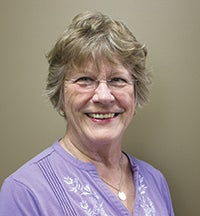Memories: Adventures aboard the passenger trains
Published 8:45 pm Tuesday, October 22, 2024
|
Getting your Trinity Audio player ready...
|
Memories by Bev Jackson Cotter
How fun it would be to climb aboard a passenger train, settle back in a comfortable seat and watch the countryside go by as we relax, knowing that at our next stop we would meet friends or hop in a taxi that would take us to our next destination. There would be none of this watching several lanes of traffic, and road construction signs, and GPS business with specific directions to follow, and what’s her name telling us to turn right at the next corner.
Yes, technology has its advantages, but so did life before today’s modern world.
When I was a child, we lived on the north side of Eighth Street in Albert Lea. The south side of the road, for acres and acres, was cornfield. There were houses in the Margaretha and Frank Hall areas on the east, and businesses west of St. Jacob, but I could look out my bedroom window across those acres of corn and watch the traffic on Highway 65 South and the passenger and freight trains heading out of town.
My imagination loved the opportunity to wander. Did the same freight trains that passed through Albert Lea also stop at Hollandale to load potatoes or cabbages to carry to distant markets? Or when the trains from miles away stopped in Albert Lea, did they unload products for our hardware or grocery stores and then load meat products from Wilsons and stoves or lanterns from the American Gas Co. or store fixtures from Streater to carry to distant cities?
Sometimes the moving trains became a math problem. There might be 29 box cars and 17 flat ones stacked high, and 36 tank cars, and the engine and the caboose. Let’s see. That’s how many? Or wait. Did I miss some?
It was the passenger trains that fascinated me most. How many train cars were there? Were all the people going long distances or to the next town? At night the windows would be lighted. What were the passengers inside doing? Reading the newspapers? Visiting? Checking their itinerary? Would they be on time to make their next train?
My first two opportunities to ride on a train occurred when I was in high school. One year, several journalism students attended a high school conference in Minneapolis. We rode to the Cities by train, stayed at the Curtis Hotel, took a taxi out to the university campus, ate in a tiny restaurant across from the hotel and returned home by train. My, what an adventure.
The second train ride, a totally different kind of adventure, was with the high school drama club. On a Saturday morning we met at the Albert Lea depot, boarded the train, rode to Des Moines to attend a Shakespeare play at Drake University, then boarded the train again and headed back home, only to arrive in Albert Lea at an unbelievable hour on Sunday morning. There wasn’t much sleep on the train that night, either for the students or our adult chaperones.
I do recall another train related super highlight of my high school years. In September 1952, Gen. Dwight D. Eisenhower was running for president of the U.S. as the Republican nominee. During his campaign, his train was coming through Albert Lea, and he was scheduled to make a stop during the school day. Consequently, students were released from classes to walk from the school on Clark and West Avenue over to Broadway and south to where the tracks crossed at what is now the intersection of Front Street and South Broadway.
David Head, who was the editor of the AhLaHaSa, along with Minnesota congressman August Andresen and Freeborn County Republican Chairman John Willyard, were able to board the campaign train at Manly, riding in the lounge car next to the one where Eisenhower was riding. They were told definitely no interviews would be allowed. However, Eisenhower entered their car and was besieged by reporters. He ignored them and sat down next to Dave, putting his arm around his shoulders saying, “Well, Dave, how about an exclusive interview this morning?” Later Dave wrote an article about the interview for the Sept. 18 AhLaHaSa, saying, “I shall never forget that moment … and I was too young to vote!” Eisenhower talked to him about young people learning from history and how war was a “negative goal, a material and moral loss.” What an amazing experience for a 17-year-old kid.
Later, when the train stopped on South Broadway, Eisenhower appeared on the caboose platform and spoke to the people standing on Broadway hill. After a brief message, he re-entered the train, rolled on to his next campaign stop, and we all returned to school.
Today when I hear a train whistle, even though it’s a freight train, I’m reminded of that little girl sitting in her bedroom window, watching the passenger trains leaving town and wondering what kind of life experiences and new adventures lay ahead for their passengers.
Bev Jackson Cotter is a lifelong resident of Albert Lea.


